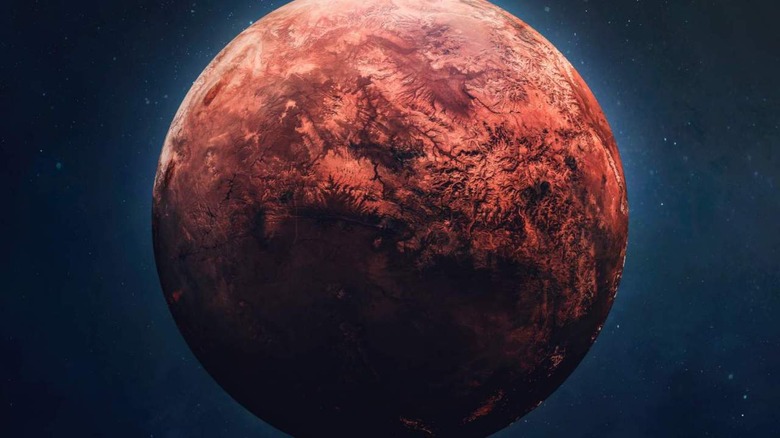Mars' Hidden Water Store Looks Like A Mirage
Those who dream of possibly terraforming Mars for human habitation have placed a lot of hope on the Red Planet currently containing water, as it would lend validity to the theory that it could continue to retain water (and an atmosphere) under the right conditions. However, a new study from researchers at both the University of Texas and University Grenoble Alpes, published by Geophysical Research Letters in AGU Journals (American Geophysical Union), suggests that what scientists thought was water may not actually be, well, water.
The team's hypothesis is that the discovery of an extremely bright radar return 1.4km below the ice at the base of the south polar cap, which was long thought to be an indicator of underground lakes or an aquifer, is actually being caused by something like volcanic materials. In other words, the team believes that something like a cluster of volcanic rock could be responsible for these radar readings rather than an underground water source.
Researchers used some of the roughly 15 years' worth of measurements provided by MARSIS (the Mars Advanced Radar for Subsurface and Ionosphere Sounding) to examine the reflectivity of Mars' surface and compare readings from various materials to what was theorized to be an underground water source.
The study details
Theories of water on Mars have been looking somewhat tenuous for a while now, with several other theories offering up more plausible (but less exciting) explanations. As the study itself acknowledges, "the current temperature and pressure at the Red Planet makes stable liquid water unlikely at the surface." While thus far it's not impossible for Mars to contain water below the surface, it's not looking very likely.
As the study states in its conclusion, the readings between the materials on the planet's surface and whatever it is that MARSIS detected under the surface of the south pole appear to be very similar. To the point where it's likely that they are, in fact, the same.
"Our results provide insights into what current terrains existing at the surface of Mars could be responsible for the SPLD bright basal reflections," the study explains, "Most of those bright regions are subdivisions of larger units geologically related to volcanic constructs."
This doesn't mean the search for water on Mars is over, however. According to the University of Texas, Cyril Grima, the study's corresponding author and scientist for the University of Texas Institute for Geophysics (UTIG), is working with Isaac Smith, a Mars geophysicist from York University, to propose future water-finding missions using radar. Presumably to find more evidence of former life on the planet, or to help pick out potential future landing sites on the surface.

